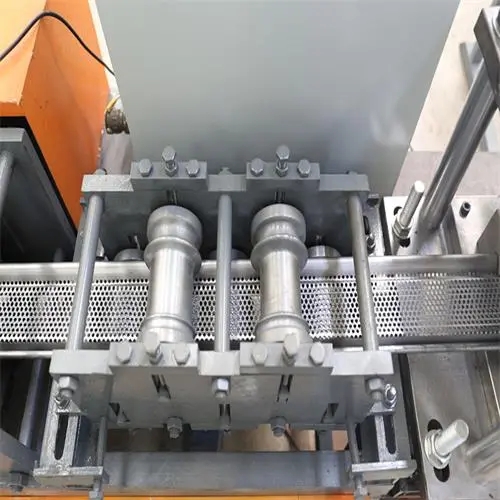
The Corrugated Sheet Roof Roll Forming Line Revolutionizing Roofing Solutions
In the construction industry, efficiency and innovation play vital roles in determining the quality and sustainability of building materials. Among various advancements, the corrugated sheet roof roll forming line stands out as a transformative solution for roofing applications. This technology not only enhances production efficiency but also ensures the quality and durability of roofing sheets.
Understanding the Roll Forming Process
Roll forming is a continuous process wherein a long strip of metal is fed through a series of rollers to achieve the desired profile. In the context of corrugated sheets, this technique is employed to create sheets with waves or ridges—characteristics that improve strength and water runoff. The corrugated design not only enhances aesthetic appeal but also provides durability in various weather conditions, making it a preferred choice for residential, commercial, and industrial roofing.
The roll forming line typically consists of various components, including uncoilers, leveling machines, roll forming machines, cutting units, and stackers. At the beginning of the process, large coils of metal are uncoiled and fed into the leveling machine, which flattens the metal to ensure a consistent thickness. The flattened sheet then enters the roll forming machine, where it is shaped into the desired corrugated profile through a series of rollers. Once formed, the sheets are cut to the required length and stacked for delivery or further processing.
Advantages of Using Corrugated Sheets
1. Lightweight and Strong Corrugated sheets are significantly lighter than traditional roofing materials, which simplifies installation while maintaining structural integrity. Their unique design disperses loads evenly, reducing the risk of deformation under pressure.
2. Weather Resistance The ridged structure of corrugated sheets enhances their ability to resist water and other environmental conditions. This makes them an ideal choice for regions prone to heavy rainfall or snowfall, as they facilitate efficient drainage.

3. Cost-Effectiveness The roll forming process is designed for high efficiency, allowing manufacturers to produce large quantities of sheets in a shorter time frame. This mass production capability leads to reduced labor and material costs, making corrugated sheets a cost-effective roofing solution.
4. Versatile Applications Corrugated sheets are not limited to roofing; they can also be used for wall cladding, partitions, and even in the fabrication of agricultural structures. Their versatility opens doors to a wide range of industrial applications.
5. Sustainability With increasing focus on eco-friendly practices in construction, corrugated sheets can be produced using recyclable materials and are often recyclable themselves. This contributes to sustainable building practices, minimizing the impact on the environment.
Automation and Technology Integration
Modern corrugated sheet roof roll forming lines are increasingly integrating automation and advanced technology. The incorporation of Computer Numerical Control (CNC) systems allows for precise control over the production process, ensuring consistency and high-quality output. Additionally, real-time monitoring systems help streamline operations, reduce waste, and enhance overall productivity.
Conclusion
The corrugated sheet roof roll forming line represents a significant advancement in roofing technology. By combining efficiency, versatility, and sustainability, it meets the demands of contemporary construction projects while ensuring long-lasting results. As the construction industry continues to evolve, the roll forming technology will undoubtedly play an essential role in shaping the future of roofing solutions. The continued development and refinement of these systems will pave the way for more innovative materials that not only protect our buildings but also promote environmental stewardship.